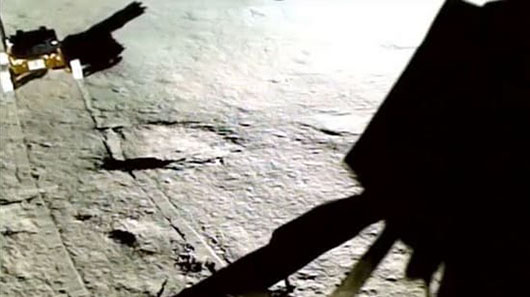Special to CosmicTribune.com, August 29, 2023
By Richard Fisher
On Aug. 23 India became the fourth nation to report successfully achieving the soft landing of an unmanned spacecraft on the Moon, following Russia (February 1966), the United States (June 1966) and China (December 2013).
At about 8:30 Eastern time, Chandrayaan-3’s 1,726-kilogram Vikram Moon lander also became the first unmanned Moon probe to land on the strategic South Pole of the Moon, according to the Indian Space Research Organization (ISRO).
Vikram also landed just 358 meters from its targeted landing point, which is high accuracy for Moon landings.

The South Pole is also the target for the United States, which may send astronauts to the Moon as early as 2025 or 2026, and China, which could send people by 2029, as it stands a higher probability of having water ice that could be used to synthesize oxygen or even rocket fuels.
Chandraayan-3 was also a success for India’s unique space program very focused on producing economic and military value for the country while exercising great efficiencies.
At a cost of about $75 million, Indian wags have noted that the Chandrayaan-3 mission cost less than the Hollywood space movie “Interstellar.”
The ISRO budget for 2023 was only $1.6 billion, compared to $32 billion for the U.S. National Aeronautics and Space Administration (NASA).
Traditionally close to the Russian space program, India is known to have consulted with Russia for the design of its Chandrayaan-3.
It utilized a Russian-style detachable booster that performed most of its deceleration burns to achieve lower Moon orbits to set up its Moon landing trajectory.
But unlike Russian/Soviet-era Moon landers like the manned LK, this booster did not crash into the Moon, but continued in Moon orbit conducting communications relays.
But Chandrayaan-3 stood in contrast to Russia’s Luna-25 unmanned Moon lander that had failed and crashed into the Moon on Aug. 20.
On Aug. 23 oft-cited expert on Russia’s space program Anatoly Zak noted some of the reasons for this contrast, “Another remarkable advantage of the Indian space program over the Russian one, along with better technology, international integration and openness, is visible presence of women, who are used almost exclusively as decorations by Russians.”
India has also consulted with Russia on the design of its manned Gaganyaan, an 8,200-kilogram spacecraft that could be tested in an unmanned flight in late 2023, with a manned test possible in 2025.
Full Text . . . . Current Edition . . . . Subscription Information

You must be logged in to post a comment Login